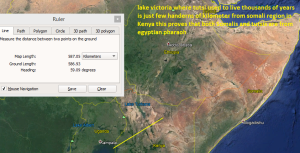Tutsi-Somali Pharaonic Culture and Heritage
AAR Midnimo Follow
“HOYDADO-DHAANTO” Somali Ancient Egyptian-Puntite Culture and Folk Dance by Rageedi Arts .
History of Somali Antiquity :
« Again the representations of the early Puntites, or Somali people, on the Egyptian monuments, show striking resemblances to the Egyptians themselves. » By Brian Brown New York: Brentano’s[1923]/ We can understand theses Similarities through their ancestral history :
According to the historian Richard Pankhurst :”””The Egyptians sometimes called Punt land Ta-Netjeru, meaning “Land of the Gods,” and considered it their place of origin .” (Richard Pankhurst, The Ethiopian Borderlands:1997) /
“Encyclopædia Britannica describes Punt as follows: “in ancient Egyptian and Greek geography, the southern coast of the Red Sea and adjacent coasts of the Gulf of Aden, corresponding to modern coastal Eritrea, Somalia and Djibouti .”/ In “The Making of Egypt” (1939). Petrie states that the Land of Punt was “sacred to the Egyptians as the source of their race.”
“In addition to the erection and endowments of many temples listed in the Palermo Stone, the Pharaohs of the Fifth Dynasty were active, as the King Sahure (2458-2446 B.C.) from this Egyptian Old Kingdom, Dynasty V (2498-2491 B.C.). Egyptian ships also reached the shores of the land of Punt on the Somali coast to procure highly valued cargoes of myrrh, ebony and animals, among other goods. ” Text Reference: The UNESCO General History of Africa:
Ancient Civilization of Africa, Vol, II, General History of Africa, G. Mokhtar, 1990, p 64-68
The Queen and Female Pharaoh of Egypt sent a trade expedition to the Land of Punt , the Ancient kingdom of the Somalis , in the 15th century B-C. The Famous French Egyptologist Christiane D.Noblecourt , in his book “Hatshepsout ,the Mysterious Queen” said that the Ancient-Egyptians and The Puntites used to speak and communicate with the same language . Hatshepsut got also many products from the Land of Punt ,surnamed also , the Land of gods , ancestors ,”Ta – An- Jirnay “; as the frankincense , myrrh, ebony, gold , and exotic animals ,Cheetahs, giraffes, baboons, etc .Also ,in order to reinforce the mutual relationships, a Puntite delegation was sent to the Ancient Egypt during the reign of Hatshepsut .
Today, the frankincense-yielding areas in Somalia are still extensive, but the trees are confined to mountain areas, which makes collection difficult; the stands on the coast have long since been destroyed. The trees introduced into Egypt have like wise vanished, and only the bas-reliefs in Thebes are left to tell the story of the wonderland of Punt. — [forestry department]
Punt and Aksum: Egypt and the Horn of Africa, Jacke Phillips,The Journal of African History, Vo. 38, No. 3 (1997), 423-457
The greek historian Diodorus of Sicily in his book “Universal history “said that in 6th century before-J-Christ , because of the euro-asiatics invasions in Egypt , more than 200 thousands of Ancient-egyptians migrated in the south of the Nile ,by crossing with their Boats Nubia-Ethiopia, in the direction ,East Africa (Now,Somalia ,Ethiopia,Djibouti… ) ./ This last historical fact can explain why the somali language is a survived ancient-egyptian language ,according to the british linguist :”The language of ancient Egypt belonged to the Hamitic group;today, of course, the language of
Egypt is a form of Arabic, but a descendant of the ancient Hamitic
language of Egypt, Coptic, survived until about the fifteenth
century, and is still used as the liturgical language of the Coptic
Church.Surviving Hamitic languages are spoken across a large part of North Africa and include Somali.” (The english language ,A Historical Introduction,” by Charles Barber .)
Even, the genetic research prove that the somali DNA is originally from Egypt => Haplogroup E1b1b1a (V68) :19th century before J-Christ => Place of origin : Egypt and northern Soudan . Extract of the genetic research 🙁 More recently, Tillmar et al. (2009) typed 147 males from Somalia for 12 Y-STR loci, and observed that 77% (113/147) had typical E1b1b1a1b haplotypes. This is currently the highest frequency of E1b1b1a1b found in any single sample population. Similarly, Hassan et al. (2008) in their study observed this to be the most common of the sub-clades of E-M78 found in Sudan, especially among the Beja, Masalit and Fur. The Beja, like Somalis and Oromos, speak an Afro-Asiatic language and live along the “corridor” from Egypt to the Horn of Africa.)
Short Research made by Abdisalam Mahamoud . Master II degree: History of Civilisations and Religions.
sajokal5@yahoo.fr
Thanks for sharing

